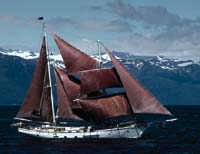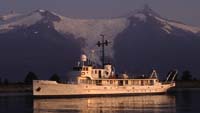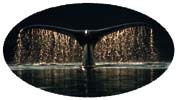
VARUA, launched in 1942, was the dream ship of William A. Robinson, circumnavigator, author, and shipbuilder. Designed by W. Starling Burgess and L. Francis Herreshoff, both distinguished designers of America's Cup defenders, she was the first vessel in America to use composite construction (steel frame with wood hull). She was designed and built to the exacting standards of the American Bureau of Shipping, which was unusual for a ship of her size, and she was designed specifically for heavy weather sailing. VARUA's fame derives from the combination of beauty and strength, and her performance at sea has been described in nearly every book written on heavy weather sailing since she was launched. From 1976 to 1978, she was completely rebuilt from the keel up to make her an efficient self-contained research platform for Intersea Foundation. 
ACANIA, designed by J.H. Wells as a luxury diesel yacht, was launched in 1929. Her outfitting reflects the opulence of the 1920's. In 1931 ACANIA became the private yacht of movie actress Constance Bennett. The yacht was taken over by the U.S. Coast Guard during World War II. After the war, ACANIA was used by the Stanford Research Institute for upper-atmospheric research in the Central Pacific until 1971. She was then transferred to the U.S. Navy and operated as an oceanographic research vessel by the Naval Postgraduate School in Monterey, California. In 1986, Intersea Research Inc. purchased ACANIA from the U.S. government, for research operations in the Pacific Northwest and Southeast Alaska. To enhance her research and education capabilities, the ship was refitted with state-of-the-art electronics, and wherever it didn't interfere with her research capabilities, her accommodations were restored to their former luxury.
Copyright © 1997-2024 Intersea Foundation, Inc. |
||||||||||
